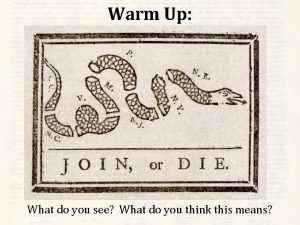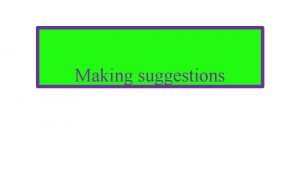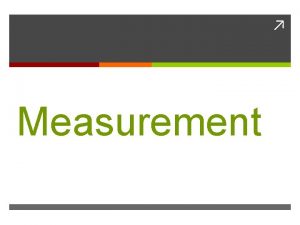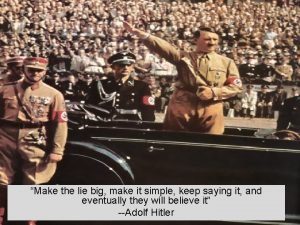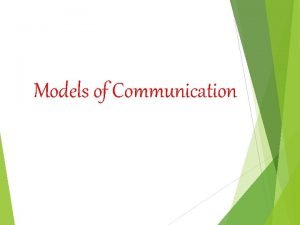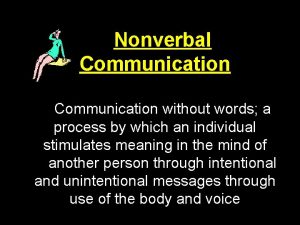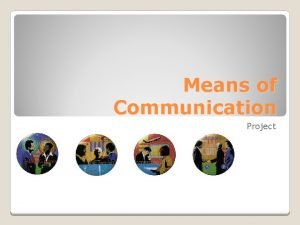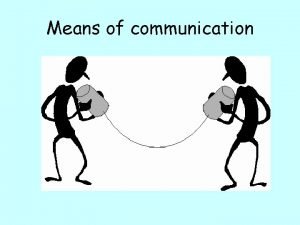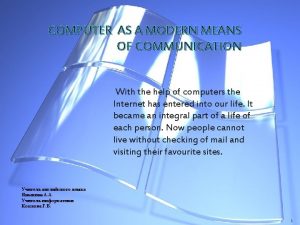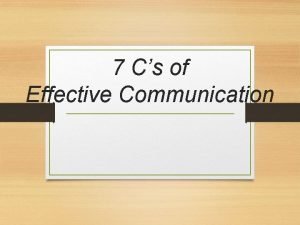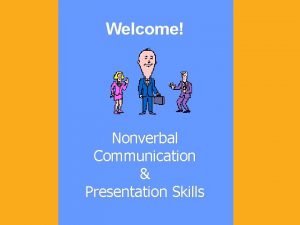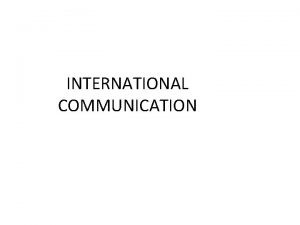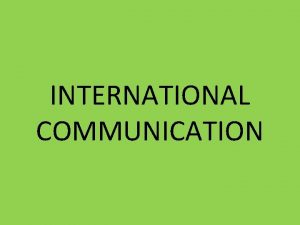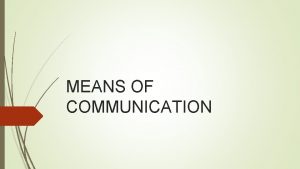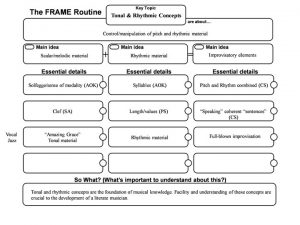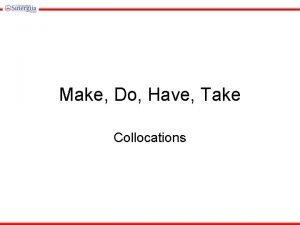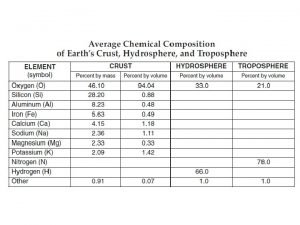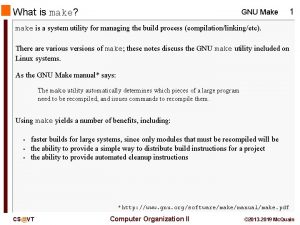Communication Communication means To make known To give























- Slides: 23

Communication


Communication means: • To make known • To give to another • To exchange thoughts, feelings and information • To participate • To share • To form a CONNECTING link

Why is communication so important? IT IS THE FOUNDATION OF ALL RELATIONSHIPS “A relationship is only as good as its’ communication!”

MEET WITH YOUR “ 12: 00 PARTNER” Discuss: “What human needs does communication meet? ”

Without communication, we humans would not SURVIVE. We Need: • • • To find out about the world we live in To know how to interpret our experiences To release tension To find out about other people To know how to get information from others To know how to let others know what’s going

COMMUNICATION IS THE WAY RELATIONSHIPS ARE: • CREATED • MAINTAINED • DESTROYED

MEET WITH YOUR “ 9: 00 PARTNER” AND DISCUSS: Give specific examples of how communication can be used to create relationships. Give specific examples of how communication can maintain relationships. Give specific examples of how communication can destroy relationships.

Why is communication so difficult?

• • • When people talk, six possible messages get through: What you MEAN to say What you ACTUALLY say What the other person HEARS What the other person THINKS HE HEARS What the other person SAYS about what you said What YOU THINK the other person said about what you said

In any given situation, there are three parts to the communication process: SENDER RECEIVER MESSAGE

EFFECTIVE COMMUNICATION exists between two people when the RECEIVER interprets the SENDER’s message the way the sender INTENDED. How does this happen? BY ASKING QUESTIONS!

Watch video:

COMMUNICATION NOTES – Part II LISTENING – According to Stephen Covey, when another person speaks we are usually “listening” at one of four levels: * IGNORING – not really listening at all * PRETENDING – “yeah, uh-huh, right? ” * SELECTIVE LISTENING – hearing only certain parts of the conversation * ATTENTIVE LISTENING – paying attention and focusing energy on the words that are being said.

The HIGHEST form of listening is ACTIVE LISTENING. . . Listening with the intent to understand

THE THREE LEVELS OF COMMUNICATION: • VOCABULARY • VOICE INFLECTIONS • BODY LANGUAGE

• only 7% of what we communicate is based on VOCABULARY • 38% of what we communicate is based on VOICE INFLECTIONS • 55%of what we communicate is based on LANGUAGE BODY

I really like you. I REALLY like you. I really LIKE you. What are the differences?

TYPES OF NON-VERBAL COMMUNICATION: • • • Facial expressions and eye contact Gestures and other body movements Touch Personal Space and distance Clothing and personal appearance Silence

Non-verbal communication RELATES to verbal communication in three ways: 1. Nonverbal communication can REINFORCE the verbal message. Give examples

2. Nonverbal communication can REPLACE the verbal message. Give examples

3. Nonverbal communication can CONTRADICT the verbal message. Give examples

When the nonverbal message CONTRADICTS the verbal message, which message is believed?
 What is the main idea of give me liberty or give me death
What is the main idea of give me liberty or give me death Asking and making suggestions
Asking and making suggestions Triangle quadrilateral pentagon hexagon
Triangle quadrilateral pentagon hexagon Meta'' means morphe'' means
Meta'' means morphe'' means Meta and morph means
Meta and morph means Bio means life diversity means
Bio means life diversity means Bio means life
Bio means life Make hay when the sun shines meaning
Make hay when the sun shines meaning Make the lie big
Make the lie big Steve angrisano go make a difference
Steve angrisano go make a difference Make the lie big, make it simple
Make the lie big, make it simple Cons of berlo's model of communication
Cons of berlo's model of communication My favorite transportation
My favorite transportation Advantages of star topology
Advantages of star topology That means communication without words
That means communication without words Paralanguage is the vocal but nonverbal dimension of speech
Paralanguage is the vocal but nonverbal dimension of speech Different types of communication
Different types of communication Smoke signals communication
Smoke signals communication What are modern means of communication
What are modern means of communication Disadvantages of visual communication class 9
Disadvantages of visual communication class 9 Technical communication
Technical communication Definition of completeness in communication
Definition of completeness in communication Non verbal communication presentation
Non verbal communication presentation Ancient and modern communication
Ancient and modern communication
